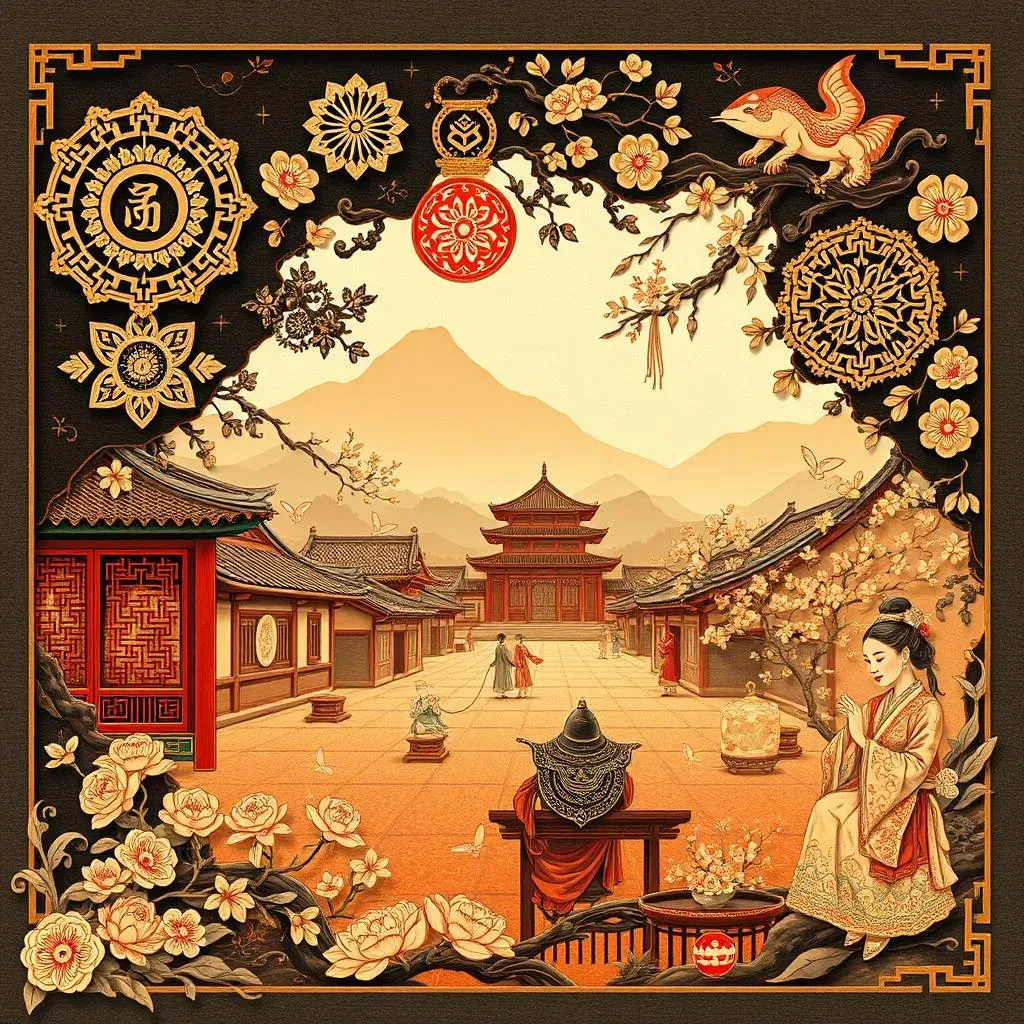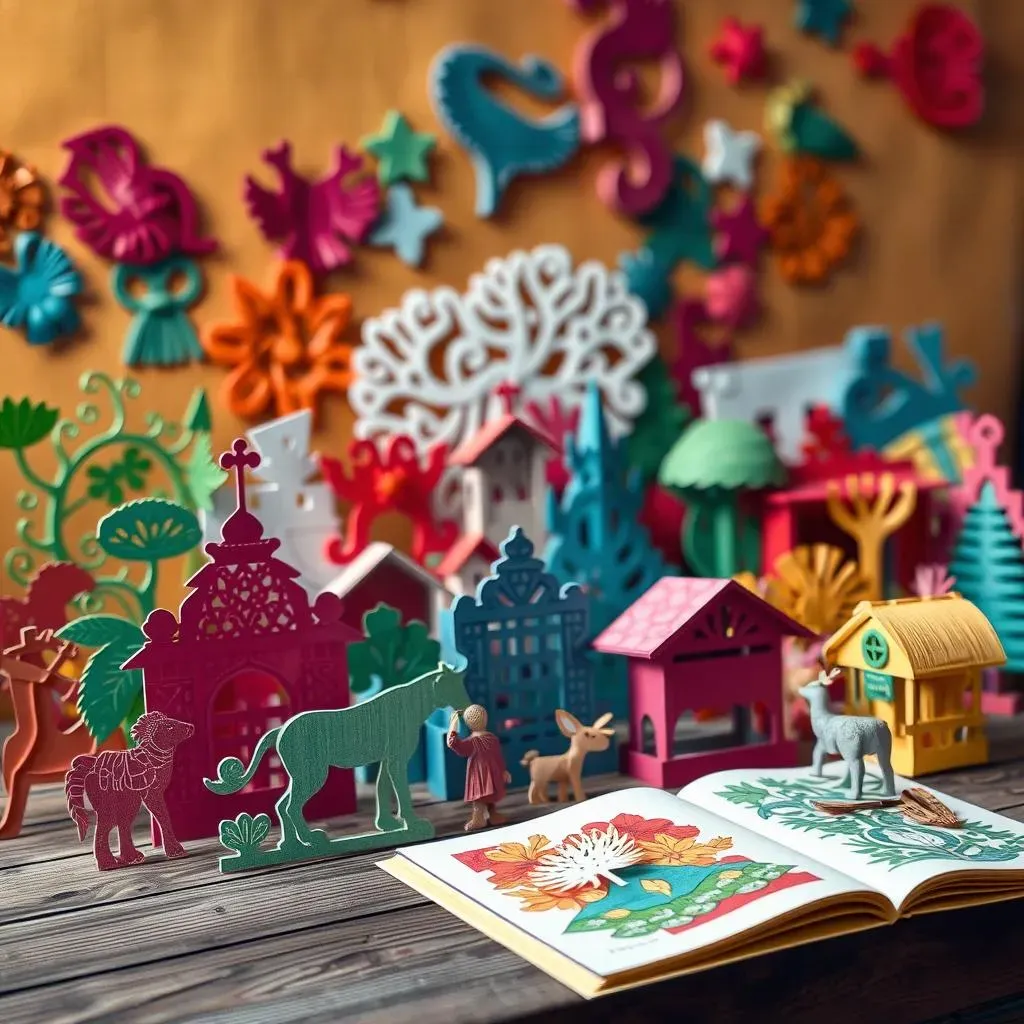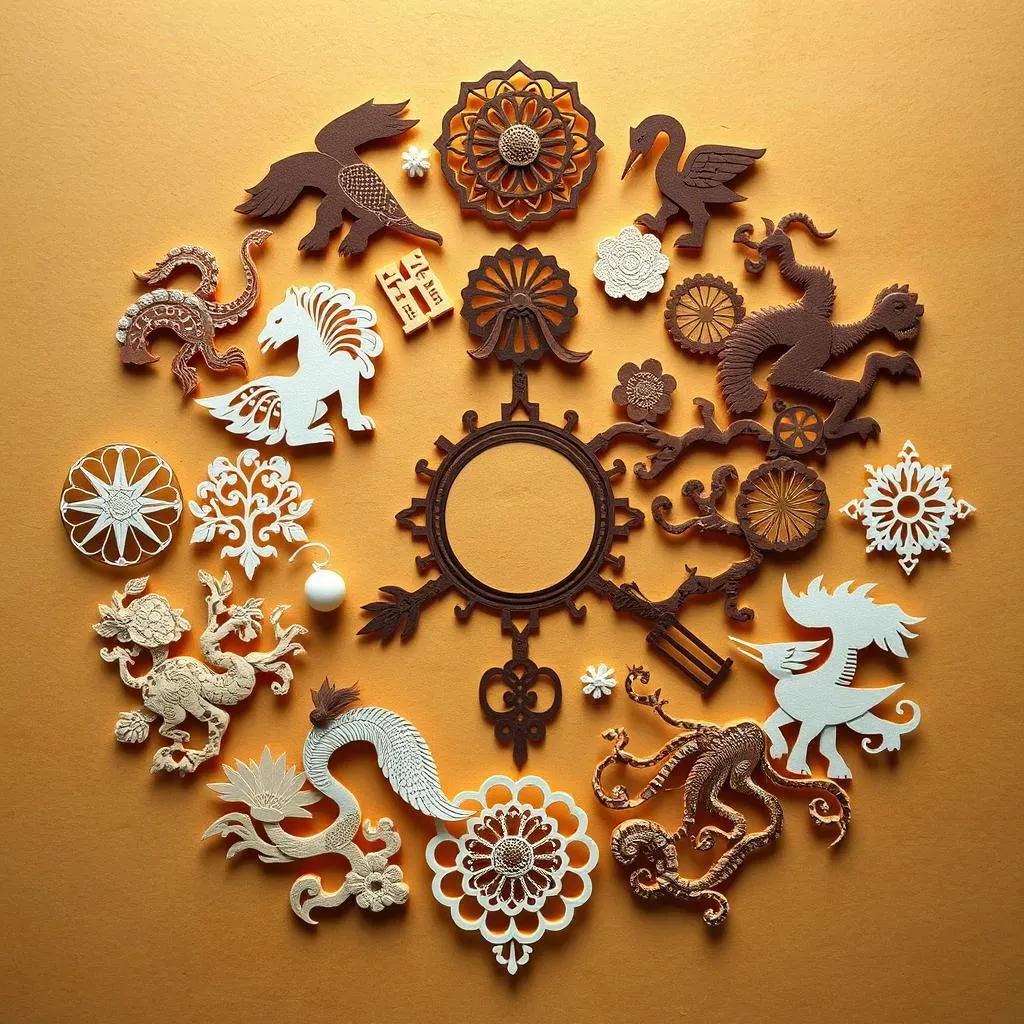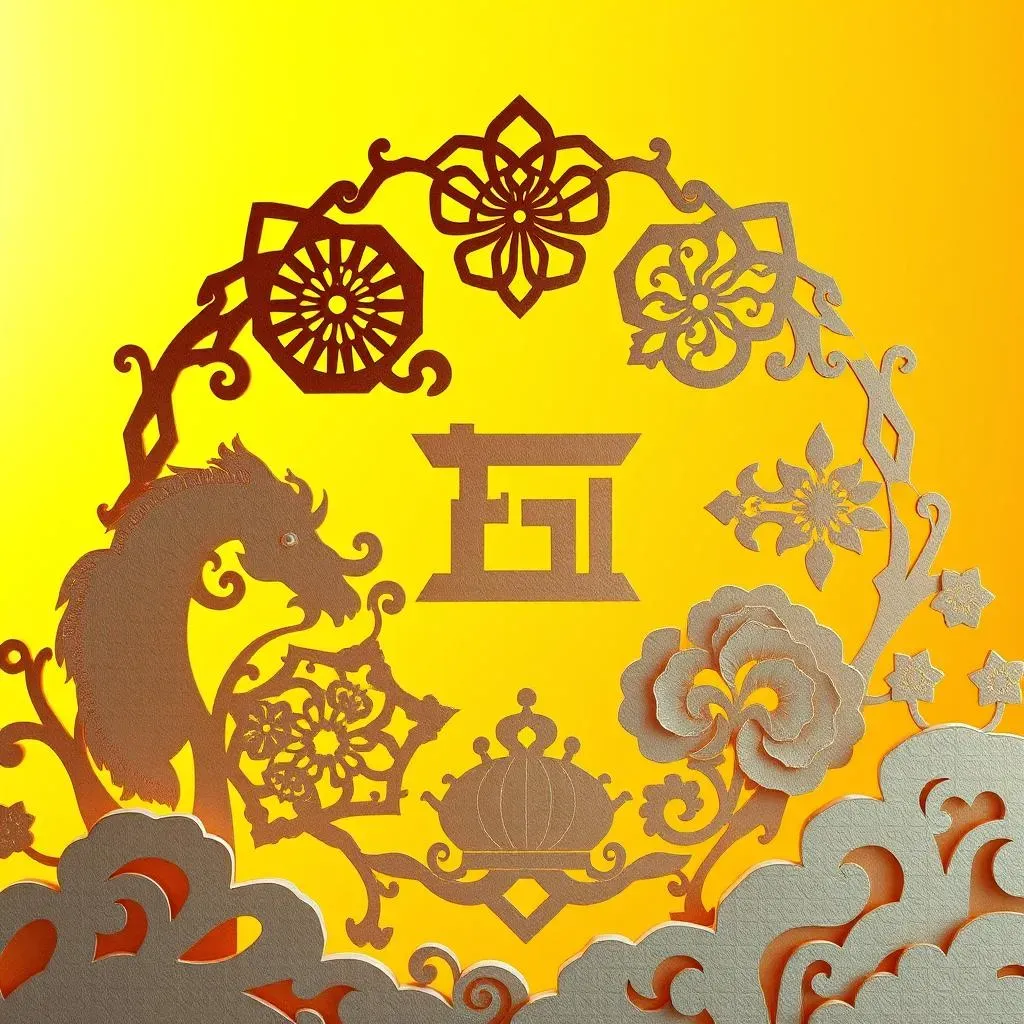Table of Contents
Ever wondered how delicate paper art came to be? The story of paper cutting history is a fascinating journey that spans centuries and continents. It all began in ancient China, not long after the invention of paper itself. Imagine using simple tools to create intricate designs, a practice that started as religious decoration and evolved into a beloved folk art. This isn't just about scissors and paper, it's about the spread of ideas, the creativity of different cultures, and how a simple material can become a canvas for expression. We'll explore how paper cutting was used in religious ceremonies, as stencils for embroidery, and how it eventually became a popular art form enjoyed by everyone. From China to Mexico, to England and Japan, each culture has added its own unique twist to this art. So, grab a cup of tea, and let's unfold the rich and surprising history of paper cutting together. We'll see how it all began, how it spread, and why it's still captivating us today.
The Ancient Origins of Paper Cutting
The Ancient Origins of Paper Cutting
So, you're curious about where this whole paper cutting thing started? Well, buckle up because it takes us way back to ancient China, around the 4th century. That’s when they invented paper. Seriously, can you imagine a world without paper? Anyway, as soon as they had it, they started snipping away. It wasn't just for fun; initially, paper cuts were for religious decorations and as stencils. Think of it like the original form of crafting, but with a spiritual twist. High-society women were all about it, using paper cuts to decorate their homes. It wasn't just a hobby, it was a way of life.
It's amazing when you think about it, that something so simple could have such a long history. Paper was precious back then, so these cuts weren't just tossed aside. They were carefully crafted and used to make beautiful patterns and designs. They weren't just cutting out shapes; they were creating art that had meaning and purpose. This early form of paper cutting wasn't about making something fancy, it was about making something that matters. It's like they were whispering stories through the paper.
Time Period | Use of Paper Cutting |
|---|---|
4th Century China | Religious Decorations, Stencils |
Later centuries | Folk Art, Home Decoration |
Paper Cutting's Cultural Uses Through Time
Paper Cutting's Cultural Uses Through Time
From Sacred to Everyday
Okay, so we know paper cutting started with a bang in ancient China, but it didn't just stay there. It’s like it had its own passport and traveled around, picking up different uses along the way. Initially it was for the high class, but it soon spread to everyone. Think of it as the ultimate DIY project, everyone from skilled craftsmen to just ordinary folks were getting in on the action. It wasn't just about making pretty things; these paper cuts became a way to show off your skills and creativity, and they became a part of everyday life. Like, if you went to someone's house, you would probably see paper cut designs on windows, lanterns, even furniture! It’s like they were saying, "Hey, look at this cool thing I made!"
Paper cuts really became a cultural language. They weren't just decorations; they were a way to tell stories and share traditions. Imagine, each snip and cut was a way to express something important, a way to connect with their community. It’s like they were writing stories with scissors instead of pens. They used them for everything from celebrating special occasions to just adding a bit of beauty to their homes. It’s pretty neat, right? It shows how something simple can become a powerful way to share culture and traditions across generations, and it makes you think about how we express ourselves today. It's definitely more than just a pretty piece of paper.
Cultural Use | Description |
|---|---|
Religious Ceremonies | Used as decorations in sacred spaces and rituals. |
Home Decor | Displayed on windows, lanterns, and furniture. |
Storytelling | Used to depict folk tales and cultural narratives. |
Global Paper Cutting Art: Different Styles
Global Paper Cutting Art: Different Styles
Paper Cuts Take Flight
Okay, so paper cutting didn't just stay in China, it's like it got on a plane and decided to see the world. And guess what? Every place it landed, it picked up a new accent, a new style. It's like each culture put their own spin on it. Take Mexico, for instance. They've got "papel picado," which are these amazing banners with intricate designs. You see them everywhere during celebrations, and they’re not just pretty; they’re a huge part of their culture. The designs can be incredibly detailed, and they often tell stories or show off important symbols. It's not just cutting paper, it's making a statement.
Then there's Japan, where they have "kirigami," which is a bit different. It's not just about cutting; it's about folding too. They create these incredible 3D shapes and patterns. It’s like paper origami, but with a twist. It’s mind-blowing how they can make these amazing structures from a single piece of paper. It really shows how diverse paper cutting can be and how different cultures use it in their own unique way. Each place has its own style and traditions, making the art form even more interesting.
Country | Paper Cutting Style | Characteristics |
|---|---|---|
Mexico | Papel Picado | Intricate banners used for celebrations. |
Japan | Kirigami | Combines cutting and folding to create 3D designs. |
Silhouettes and Beyond
Let's hop over to Europe, specifically England, where paper cutting took a different turn. During the Middle Ages, they were all about silhouettes. Imagine these elegant, black paper cutouts of people or scenes. It was super popular, and people would often get their silhouettes cut as portraits. It's like the old-school version of a selfie, but way more artistic! These silhouettes weren't just a quick cut; they were carefully crafted to capture the essence of a person. It's fascinating how one art form can take so many different paths and how people interpret it in their own way.
The cool thing about paper cutting is that it can be as simple or as complicated as you want it to be. You can create a simple heart or try a super intricate pattern. Some artists create super detailed landscapes, and some make simple shapes. There are no rules, which is why it’s so appealing. You have all these different styles and techniques, but at the heart of it, it’s still just paper and scissors, and the creative mind of the artist. It shows how creative and adaptable people can be, using the same basic tools to create such different forms of art.
“The beauty of paper cutting lies in its simplicity; paper and scissors can create endless possibilities” - Unknown
Modern Twists on an Old Art
Now, let's fast forward to today. Paper cutting is still a big deal, and it's not just stuck in the past. Artists are taking it to new heights, incorporating modern designs and techniques. You'll find paper cuts in galleries, in books, and even on clothing. It's still a way for people to express themselves, but it's also become a way to show off your skills and creativity in a more modern context. It’s amazing how this ancient art form has managed to stay relevant and inspiring over so many years.
Paper cutting shows us that even the simplest ideas can have a huge impact. It's like taking a simple piece of paper and turning it into a whole world. It doesn't matter if you're using it for decoration or making a statement; it’s all about being creative. It’s a reminder that art can be found in the most unexpected places, and that’s what makes it so special. Paper cutting history is a long and interesting one, and I think it is exciting to see where it goes next.
Paper Cutting History: From Then to Now
Paper Cutting History: From Then to Now
The Enduring Appeal of Paper Art
So, we've seen how paper cutting started way back when and how it traveled the world, picking up different styles along the way. But what's really cool is that it's not just a thing of the past. It's still going strong today! It's like, even with all the technology we have, people still find joy in cutting paper. It’s kind of amazing that an art form that started so long ago continues to resonate with people today. I think that shows how powerful and timeless paper cutting really is.
Think about it: a simple piece of paper and a pair of scissors can create something beautiful and expressive. It’s a reminder that you don’t always need fancy tools or materials to make art. The simplicity of it is what makes it so appealing. It's like you’re taking something ordinary and turning it into something special. Whether it's a simple shape or an intricate design, paper cutting is a way to connect to a rich history while still making something new and personal. It’s proof that sometimes the simplest things are the most powerful.
“Paper is patient and forgiving, always ready to start anew.” - Unknown
Paper Cutting's Modern Renaissance
These days, paper cutting has seen a real comeback. It's like it's having a second life. You see it everywhere, from art galleries to DIY craft projects. Artists are pushing the boundaries, using lasers to cut super intricate designs, or combining paper with other materials to create mixed-media masterpieces. It’s not just about traditional styles anymore; it’s about experimenting and innovating. I think it is wonderful that artists are taking something so old and making it their own.
It’s inspiring to see how paper cutting has evolved but still holds onto its roots. It's a testament to human creativity and the power of simple tools. Whether you're a seasoned artist or a newbie just starting out, the world of paper cutting is open to everyone. It's a way to connect with history, express yourself, and create something beautiful, all with just a piece of paper. And that’s pretty cool, don’t you think? It's a craft that has stood the test of time, and I'm excited to see where it goes next.
Era | Paper Cutting Focus | Examples |
|---|---|---|
Ancient Times | Religious and Stencil Uses | Early Chinese paper cuts |
Middle Ages | Silhouettes | English paper silhouettes |
Modern Era | Artistic Expression | Laser-cut designs, mixed media |
